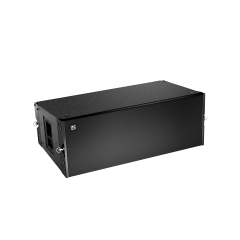It is critical to have live sound stage monitor speakers optimized for accuracy in a rehearsal and live gig environment so that performers know what they should be playing, on top of which will improve the quality of any performance. The initial thing you should keep in mind is those monitors speakers might be much powerful to play. In other words, live gigs require at least 300 watts RMS of stage monitor power to ensure that your monitors are loud and clear enough on the big stage. Gigging tip: If you play larger venues, go with monitors that are 500 watts or more to make sure your sound makes it above all the ambient noise and other musicians.
Another important element is the location of speakers. If you are unable to hang the speakers above for any possible reason or just want them set up on the stage, make sure they find a good spot (stand) where no feedback is coming from and position it at about 45 degrees angle toward yourself so that sound directly goes into your ears. If you place one of the monitors too close to a microphone, then this can cause feedback loops so make sure that at least 3 to 6 feet separate between the monitor and its nearby microphone. In the previous sense, feedback can be reduced by using cardioid or supercardioid microphone with tighter pickup patterns and are less sensitive to sound coming from sides and behind.
Proper EQ settings are critical for dialing in stage monitors. Frequencies about 250 Hz to 500 Hz can be cut/removed so that the vocal sound loses its mud, and frequencies from around approximately between 2 kHz-4 kHz would help in boosting the overall presence of your vocals. High-pass your filters at around 80Hz to rid unwanted low-frequency rumble that clouds up the mix. A ProSoundWeb study discovered that up to 40% of logistical sound clarity for performers on-stage could be solved by even the simplest corrections in EQ when done properly.
A graphic equalizer or parametric EQ is better because you can tweak with the frequency response more precisely on each of your stage monitors. Going a step further, this customization allows the sound to be tuned for individual venue acoustics and provides each artist with an accurate mix that enables them hear everything they need at just right level. Another important element of this is to get your monitor levels right as well. Too loud and you will tire your ears out, too low the performers will strain to hear themselves (meaning pitch issues later on from not being able to hear at correct volume)

It also depends on the monitor speakers you use. The alternative is a coaxial stage monitors (like the one below), with their tweeter and woofer housed together which gives you better on-axis phase response, as well as off-axis frequency repsonse. Professional sound engineers will usually favor these because of their neutrality. U2 and Coldplay are two examples of well-known bands that use coaxial monitors on stage during live performances in order to preserve the best onstage sound quality as possible.
Lastly, a digital monitor mixing system is much easier for performers to control their individual mixes. Those systems make it possible for every single artist to control what his or her monitor does and sounds like directly from a tablet, smartphone etc. This kind control enables every performer to hear only as much of themselves in the mix as they need, making it possible for sound engineers not have their hands into adjustments constantly during a gig.
When it comes to live sound production, ensuring a killer gig means getting the finest out of your stage monitor speakers. Sound engineers orient their performance design elements towards power, placement, EQ settings and monitor choices such that the performers can best perform on stage and provide a top-notch experience for the audience.